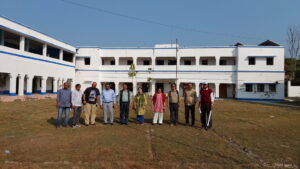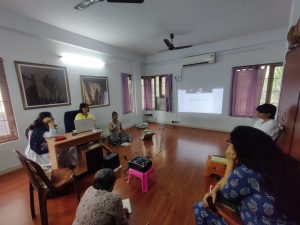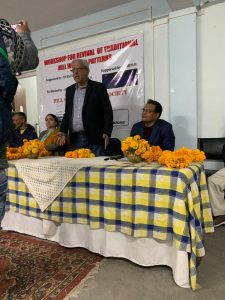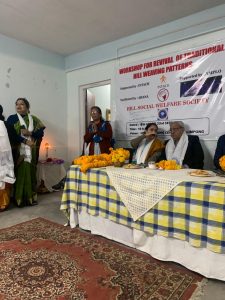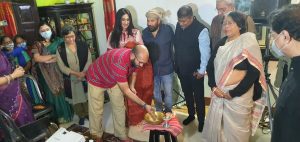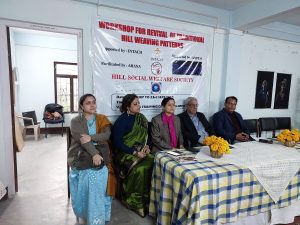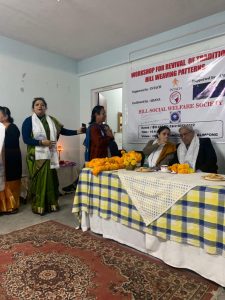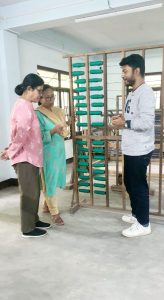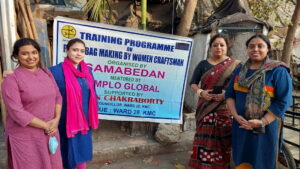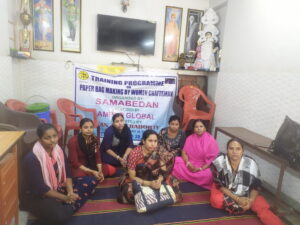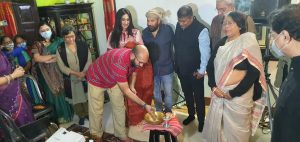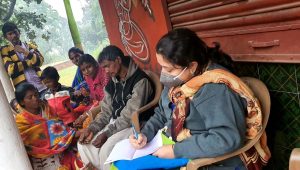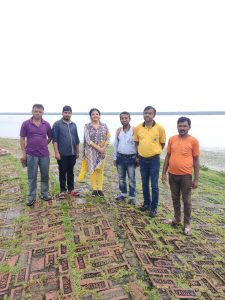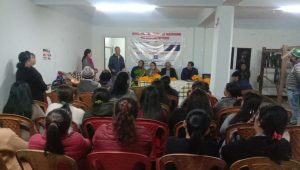Glocalization: Preserving Culture Amid Globalization
In the era of glocalization, cultural preservation is paramount. Discover how communities adapt to protect their heritage while embracing the global influences
A story of local adaptation
Back in the 1930s, a roadside eatery in the small town of Corbin in USA started gaining immense popularity among the masses serving their famed southern fried chicken.
Little did Colonel Sanders, the man running the show know at that time, that one day his secret recipe of eleven herbs and spices will take over the world with its “finger licking goodness”.
Kentucky Fried Chicken, or KFC, as it’s better known, served up fried chicken with humble side options of mash and gravy, coleslaw and fries. While still adapting to the times through means of addition of trendy sides and desserts, the menu in the KFC USA has managed to stay mostly unchanged.
In the present times the franchise has over 41,000 restaurants dotting 125 countries and territories serving fried chicken and a little extra to the masses.

Through the 80s and 90s, KFC started to make its entry into the Asian market. Beijing was the first city to welcome the global giant and with that, everything started to change.
Rice, a staple for a majority of the population in the region, replaced the original mash and gravy. China introduced congee, shrimp burgers and egg tarts in the menu. However, it was the entry into the Indian market that brought about the most drastic outcome.
A franchise that makes no attempt to be subtle about the product it deals in, was now catering to a significantly large vegetarian population with equally demanding taste buds.
As a result, items like veg strips, veg twister, potato krisper and paneer zinger started making appearances on the menu. But the shock was yet to come. KFC’s showstopper, the Colonel’s secret recipe, the one that had catapulted it to a global brand, struggled to satiate the high spice tolerance of the Indian population.
Eventually the inevitable happened. KFC stopped selling the Original Recipe Chicken in India.
Glocalization
KFC is the perfect example of a global brand overhauling itself for acceptance by a local culture, pushing itself to the extent that it lost its own identity.
The phenomenon is best described by the word Glocalization, an amalgamation of the words Globalization and Localization, meaning, “a product or service that is developed and distributed globally but is also adjusted to accommodate the user and consumer in a local market.” (cit: Investopedia)

With encouraging government policies, improved communication and foremost, the reach of social media, there is no escape from the effects of Globalization. Sitting in a village in the remotest corner of India, a young boy is mesmerised as he watches Messi on his Chinese mobile phone screen, dreaming of life in a far-away city of sky-scrapers where he has heard that every dream can come true.
That is the power of Globalization. While it does help in the advancement and development of a society by bringing new ideas and technology, an uncontrolled adaptation has a detrimental effect on the local community, especially to its art and culture.
The exquisite Varanasi silk
Delicate motifs and patterns handed down through generations of weavers since the Mughal era come alive in the bright soft weave of the Varanasi silk sarees. Their fingers dance intuitively on wooden looms, weaving the designs etched in memory into the fragile yarn.
Concentration is key, as a single mistake can result in the whole twelve yards to be rejected. To minimize distraction, the weavers work in solitude behind closed doors, in almost pitch darkness.
The windowless rooms are barely lit under a single low power incandescent lamp, while the only sound is from the rhythm of beams brushing against each other. It is a labour-intensive job. A fully adorned saree can take up to a month to complete.
But the middlemen and the retailers want it fast and cheap as they reap profit from the hard work of the underpaid weavers.
Globalization has invited many foreign brands and suppliers to the massive consumer market of India and with that a tough competition for the local market, which neither has the technology nor the resources to fight back. Weaving has moved outside the closed doors onto the factory floor.
The traditional patterns are slotted on punch cards and within a matter of hours, the modern power looms churn out hundreds of identical sarees ready for the market. Since the delicate silk breaks in the harsh movement of the power looms, it has raised the need for a different, stronger yarn.
Authentic natural silk has been replaced by synthetic mixes supplied from China. The markets are flooded with sarees that are cheap, affordable and pleases the sellers for the high profit margin theymean fabricate.
The soul of Varanasi silk is lost, but not before making thousands of weavers jobless and homeless as they emigrate to different parts of the country in search of a livelihood.
Sufiyan belongs to one such small community of weavers in the area of Pilikothi in Varanasi who are fighting to keep their head above water. To add to their woe, the pandemic has struck a death blow to an already ailing industry.
Whatever skill had been holding on through the years of struggle, has finally given in to the need for survival and left for greener pastures, mostly to the textile industry in Gujarat. Sufiyan’s story is about one last attempt to save his community, to bring back the weavers, which is only possible by large-scale financial investment and technology upgrade.
Tribal art of Purulia
Purulia is one of the most underdeveloped and underprivileged regions of West Bengal, but surprisingly, with one of the richest and most diverse cultural heritage.
The semi-nomadic tribes moving around the forests of Chhotanagpur plateau, hold on to a rich heritage which come alive in their tribal art forms.

The Malohar tribe is one such tribal community who are scattered around the many small villages of Purulia. Their traditional art form uses brass, zinc and copper to make artifacts for daily use as well as for artistic productions.
Thanks to Globalization, another metal art form from Purulia, Dokra, has received much limelight in recent times. However, on the flip side, mass scale production of Dokra has made it lose its originality while its popularity has overshadowed all other metal artworks from the region. The Sherpai or the measuring bowl made of zinc, is one such unique artifact made by the Malohar community.
Traditionally used for measuring grains, the Sherpai come in various sizes and designs, each one as distinct from the other and can take hours to create. The process starts with crafting the earthen cast for the bowl followed by painstakingly rolling tar into the design that will hold the molten zinc.
Once the zinc has solidified, the finished product is beaten out of the cast and freed from the tar mould. The outcome is a rustic piece of tribal art that can entice any connoisseur of handmade artifact.
Unfortunately for the community, the lack of awareness among the general populace about the Malohar artform has created a sense of disinterest and apathy towards their own unique skill. Gostho Malohar is the head of a family of twenty five, who are the victims of such apathy.
The community is uneducated and are unaware of the possibility of any self help groups that could bring them together and propel them towards recognition and prosperity. Suffering from caste-based discrimination and financial instability, they lead a nomadic life, moving in search of livelihood as they work as daily wage earners in brick kilns or agricultural fields.
They barely make enough to make ends meet, completely unaware of the unique talent and capability they possess.
The issue of development
In our pursuit of development, we are hurtling towards a soul-less future, symbolised by stark metal and concrete structures and virtual lifestyles, that threaten to smother rustic living and generations of knowledge and wisdom in its crumbling walls.
It indeed is a matter of shame that our cultural heritage is dying a miserable death as slowly yet definitively our traditional forms of art and craft are sinking into oblivion.
We should take cognizance of what India’s Nobel Prize winning economist Amartya Sen has envisioned while presenting his thoughts to the World Bank for an alternative methodology for evaluating development progress.
He has roundly criticized strictly “empirical” data-driven indicators of development and progress. In their place, he has proposed what he refers to as the “capabilities approach”.
Cultural capabilities may be understood as the ability for an individual to contribute to the processes of producing, consuming and remembering their cultural roots.
True development should consider the capability of a community to uphold their history, build on it, nurture it and elevate it to a state of richness, all the while taking support of the advancements to technology.
The need of the hour
The problems affecting the arts and artisan industry are multifold. There is a lack of awareness among consumers resulting in either a lack of demand for the craft, or a lack of education that creates a demand to underpay the skill involved.
The community itself is unaware of their own potential and where to look for support. Financial strain and a skill gap further deteriorate the situation.
In order to protect the dying art and artisan industry, it is a necessity to make artisans aware of the importance of their skills and capabilities, and bring back their sense of pride in their rich heritage.
With an all round understanding of the concept of Globalization, and relevant skill training, they will be able to leverage it for their benefit rather than considering it as a threat.
They need to be convinced that working in the industry could help them supplement their income as that would be the strongest motivation to get involved.
One of the biggest issue haunting the industry is the attrition of skilled labour. A much underutilised solution is to engage the women from the community as part of the workforce.
Through skill training, it is possible that women will be able to bridge the resource gap in the not so distant future. Simultaneously, roping in the private sector and marketing agencies will bring in the much needed awareness and funding which will help in creating the demand for our threatened art forms.
This would ensure sustainability of livelihood programs and as a result, build a smarter supply chain.
Conclusion
Any kind of art form, whether be handicrafts, handlooms or traditional culture, they all have a critical influence on society and culture.
They determine opinions, instil values and are a melting pot of the diverse experiences acquired by the community over generations.
Globalization has provided us with awareness, knowledge and technology, making us eager to meet new standards and expectations. The urge for acceptance has contributed to the inevitable disappearance of traditional culture.
But Globalization need not inhibit, rather it should be taken advantage of to promote local culture and traditions. It is how we adapt ourselves to the global revolution. Unless every community consciously stands up against Glocalization from within, it will stand the risk of losing its own identity, only to become part of a vast canvas that has been painted over with a single monochrome brush.
It is high time we get conscious of our social environment and appreciate that development also means preserving and enhancing our traditional art, culture and values so that we can proudly pass them down to our next generations to lead a sustainable future.










